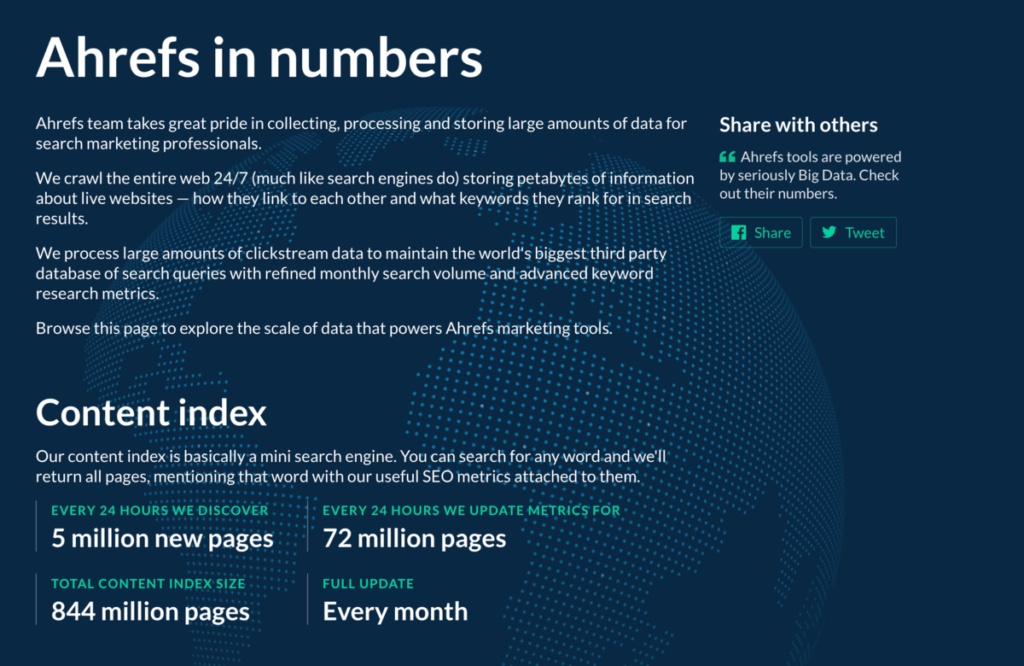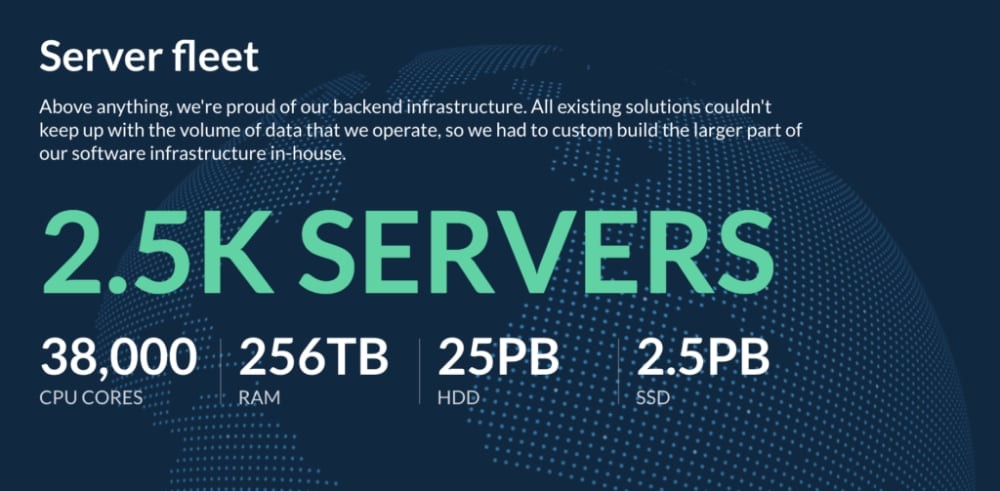What you will learn
- How domain rating is calculated
- Why you have probably been using DR the wrong way
- Why you should not use DR in isolation
- What metrics are best to use alongside DR
- Tim Soulo’s number 1 tip to get more search traffic with Ahrefs
In this week’s episode, Gael and I are joined by Tim Soulo to discuss the recent changes to the DR (Domain Rating) metric on Ahrefs.
Tim is the Head of Marketing and Product Strategy at Ahrefs. So, who better to discuss the recent changes and help you understand what you should actually be using DR for?
What is DR (Domain Rating)?
Domain Rating is a site-wide metric.
It gives you an idea of how strong the backlink profile of a site is by looking at links from domain to domain.
Tim wrote an article on the Ahrefs blog that explains everything in detail. However, as a quick overview:
We recommend as, in our opinion,on the market. You can try it out for 7 days for just $7. It’s well worth it.
- DR only takes into account one link from each domain
- It only considers dofollow links
- It takes into account the DR of the site linking to your site
Tim suggests that you think of it like page rank on a domain level. The calculation is a little bit more complicated than outlined here but you can sum it up as the link popularity of your site or a combination of the number and quality of the sites linking to your domain.
Mark’s Note
While far from perfect, DR is probably the best metric to gain a quick “bird’s eye” view of the relative authority of a site. If you need to make decisions about the quality of large numbers of sites, for example when prospecting for links, then DR is your best bet. But if you can spend more time looking at each site, then there are several other factors which becomes equally, if not more important.
Why Did You Feel The Need To Change The Domain Rating?
Ahrefs we receiving a lot of feedback within their Facebook group and a number of support requests.
They were finding that a new site could build a few links and pretty soon it was sitting with a DR of 30. This was unrepresentative of reality. In fact, most sites were clustered in the 30-50 range which simply isn’t the case.
Ahrefs wanted to redefine the scale so that new sites had a lower DR and the scale reflected the real world a lot better.
How Was The New DR Calculated?
This is where it becomes important to be clear with the language that we use.
The underlying numbers behind DR have not changed. Each site is given a figure for their ‘domain strength’ so to put it. This is the same number that determines the Ahrefs rank.
Mark’s Note
Ahrefs Rank is this raw number ordered from highest to lowest. Ahrefs rank doesn’t show the relative distance between each number. DR is simply Ahrefs Rank plotted on a scale of 0-100. This is a logarithmic scale. The change in this update is actually only to this scale. The ordering (Ahrefs rank) remains constant. It’s just the scale that has changed.
For the first update that the community didn’t really take to, Ahrefs tried a little too hard to represent the real world. It was set up based on the biggest sites – Google, Facebook, Twitter, BBC and then compared sites to them.

This left almost all sites that weren’t extremely large in the 0-10 range.
While this may be reflective of reality, it lacked the granularity that the Ahrefs community wanted.
This was because the two major use cases of DR tend to be:
- A metric to present to clients
- A quick way to decide if it is worth pursuing a link from that site
In the end, Ahrefs ended up going back to the drawing board to make better use of the scale. They realigned things so that fewer sites were clustered in the 0-10 area. Then, they also added decimal points to the scale to ensure that people can distinguish between sites at the lower end of the scale.

Have the Complaints Arisen From People Using DR In The Wrong Way?
It’s important to note is that DR isn’t a useful metric in isolation for either deciding upon link quality or as a metric to report on to clients.
That is because, when deciding links to pursue, you are better looking at UR (URL Rating) because the power of the page is more important than the power of the site overall.
When reporting to a client, the best metric you can use is the amount of search traffic going to the site. Obviously DR can supplement this but it cannot replace it.
Similarly, if you are running a link building service, the best thing you can probably do is send the client a list of URLs that are linking to their sites. This way they can run an eye test that will give a good impression of site quality.
DR can be used as an easy metric to explain to a VA that does all the donkey work involved in link building. Don’t get us wrong, it can be a useful metric but it is not the be all and end all.
Mark’s Note
There are some exceptions to this. If you are trying to land a guest post, the guest post won’t exist yet so there is not UR to look at. DR is the best “quick glance” metric which correlates well with site authority.
At the lower end of the scale, the granularity the decimal point provides is nice but, in all honesty, it does not make sense to want to get a link from a DR4 site but not a DR2 site based on DR alone. Sure, if you believe the site will grow into something larger but not based on that two point difference.
Does This Mean That People Were Overreacting To The Changes?
No, not at all in Tim’s view.
In fact, Tim mostly deals with the Ahrefs Facebook group. These tend to be some of the most engaged customers. For the most part, all of the criticism was constructive rather than simply being negative.
In fact, at is at times like this where the value of having such an engaged community on Facebook shines through.
Does This Affect The KW Difficulty Metric?
No.
However, there is some work being done on that metric. The issue is that there is a difficult balance to strike.
There are cached KD scores available for millions of results. But, if you want a more complicated metric, you are not going to be able to have those values on hand or Ahrefs are going to have to include them in their agency pricing plan.
An accurate KD score is probably not going to be enough of a draw to get people to upgrade their plans so it does not really make sense as a business decision or form the user’s perspective to put the effort into creating a more complex KD score.
How Does The Size Of The Index Affect Server Costs?
Well, you can find out for yourself at ahrefs.com/big-data.
Go and check it out, it’s worth a read.



What Metrics Do You Look At For The Ahrefs Blog?
Tim is in charge of the Ahrefs blog. To judge how things are going, he uses a few different metrics.
Firstly, he looks as the total search traffic coming to the blog. Not at the rankings or the anything else but the actual traffic. Rankings alone are an indicator but they do not tell the whole story.
As Tim wrote in this article on the Ahrefs blog, the search volume is not the same as the number of people who actually click through to a result. Ads, featured snippets and all kinds of search features affect the number of clicks.
On top of that, a single page can rank for many keywords. In fact, many articles pull in more traffic from a number of long tail keywords combined than they do from the main keyword alone.
Secondly, Tim looks at the traffic to the type of articles that convert.
The first article gets a LOT of traffic but doesn’t convert all that well. Whereas, the guide to KW research converts brilliantly but doesn’t get quite as much traffic. Tim would rather focus on building more traffic to the second article than the first.
What One Tip Would You Give To Ahrefs Users?
Focus on long tail keywords.
Find the keywords that will get the most search traffic, not necessarily the keywords with the most search volume. As mentioned earlier, focus on clicks.
You will find that the reports give you the total search traffic going to the top pages, not just the traffic from the main keyword as it is important to also target those long tail keywords.
We recommend Ahrefs (read the review) as, in our opinion, the best keyword research tool on the market. You can try it out for 7 days for just $7. It’s well worth it.





